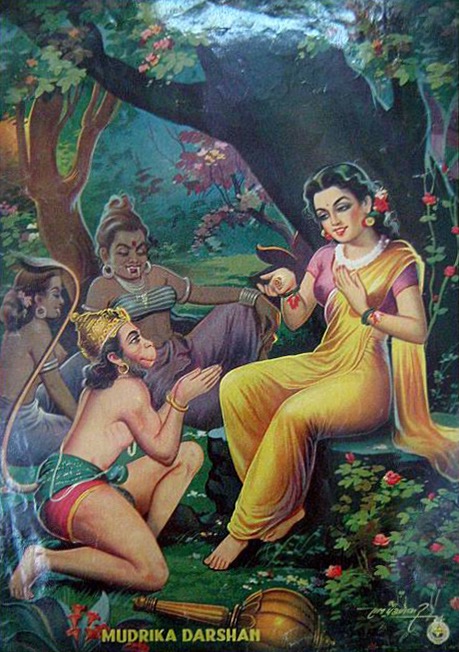Last Tuesday at 6am, roughly approximates the 6 month mark for the current version of the Near East Yoga Hanuman Chalisa sadhana. After a well attended start the practice has dwindled down to the most devoted. we have taken to singing in harmonies and even recored a session. Since its a permanent addition to the schedule and a remaining part of “28 Days of Kirtan” dating near the end of the lunar year 2015, it’s never to late to come join us who hold it dear.
As a personal practice, the song has been in my body, speech and mind for 13 years, coming to prominence as I began my study of the deeper connections of chanting, yoga philosophy and Sanskrit. The Chalisa or 40 verses, a Hindi poem about the auspicious deeds of Hanuman, attracted me, like many others, due to the resonating tones of Krishna Das and the mystery surrounding yoga as a workable philosophy hidden in a foreign language. It is still a work in progress that never fails to reveal itself as I grow with it.
When it finally dawned on me that to learn Hanuman Chalisa would require a lot of effort, I took to chanting it 7 times a day, every day for 7 months until I could sing along unprompted and eventually learn in by heart. In the beginning it was nearly impossible to shape my mouth to make the right sounds but eventually I learned and have been helping others work with it in different incarnations for a decade. Many of you hold it dear as well and it’s a part of how our group practices.
Our tradition of Ashtanga yoga holds it in its heart do to a New York City connection that the folks I learned the method from brought to Portland back in the late 1990s. Krishna Das and the Jivamukti Center in NYC were instrumental in establishing kirtan as a vital part of Ashtanga Yoga. Tim Miller, one of the founding American teachers of Ashtanga Yoga holds the Hanuman ethic in the form of “Service to God” through yoga teaching and support and he has been an inspiring light to many Ashtangis through his unswerving dedication.
For me, in my early service to yogis, the fables of Hanuman, his discovery of his latent abilities though his service and devotion to Rama related in the Hanuman Chalisa became a personal code and a secret mission I continue to this day. Having just completed my college years in the time leading up to the start of Near East Yoga, one of the final classes I took was a seminar on leadership. The resonating feature of this experience was that to lead was to serve. Holding space for Ashtanga Yoga allowed me to serve without really knowing where it was all going. The adage of Sri K Pattabhi Jois “do your practice, all is coming” allowed me to focus on the method and keeping the room clean and open. The rest, Yoga Sutra, Kirtan, Bhagavad Gita, the nature of the sangha and how my life unfolded has developed on it’s own, naturally over time.
The Hanuman Chalisa opened me up to keeping the work pure and simple, to protect the door and support the yogis within. Two verses, 21 and 30 have been like mantra to me as they describe how Hanuman guards the door of Rama and protects Sadhus or holy practitioners against demons- take the later part as metaphor for distraction or dilution and you can understand the effects of 15 years of just a simple practice. I always say thanks Guruji at this point. When it comes to service, his ethic to serve the practice and all is coming continues to reveal his shining face smiling down on us. As it often feels like this whole yoga thing is just getting traction, I look forward to serving anyone who finds benefit in what Near East Yoga has to offer however simple.
Lastly and what inspired me to write this post, relates to the photo below of Hanuman revealing to Sita, imprisoned by Ravana in his luxurious garden in Sri Lanka, Rama’s ring that signified that Rama was searching for her and she should be inspired to be soon found and not give up hope. He appears to her (9th verse) in what the Chalisa states as Shooksma-rupa or “tiny-formed” referring to one of his many powers of manifestation. As a student of the hidden meaning in ancient verses, Hanuman here teaches that sometimes small is the most potent form when a special meaning is being passed among intimates. For me the teachings of of yoga and dharma are so soft and subtle that often we only find them out when we have grown quiet, maybe lonely, waiting in the garden of our own oppression wondering why we have been forgotten, when in that very moment a small gesture from a devoted being saying be not afraid, I come as an emissary from the Beloved who right now is looking for you- which to me says a lot about integrating our inner-self with the moment and being right sized in our expectations of the aggregate of the human condition.
Hanuman, the ultimate shapeshifter, also grows big when the time is right, which we will save for another day-
For now, may we all grow small and be powerful and open to revelation in our own way.
Blessings- Casey


